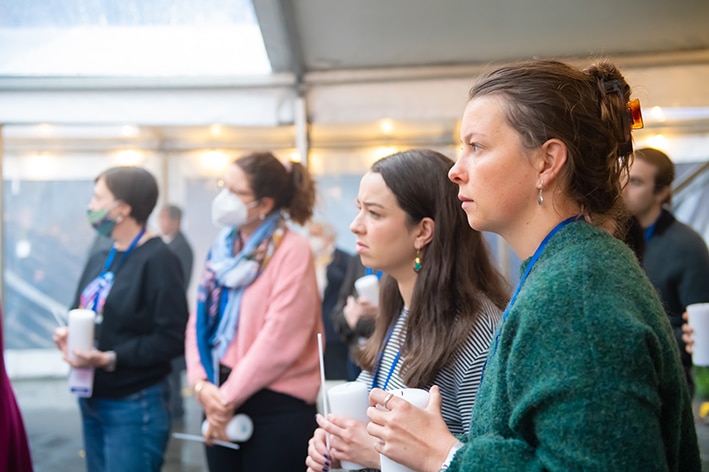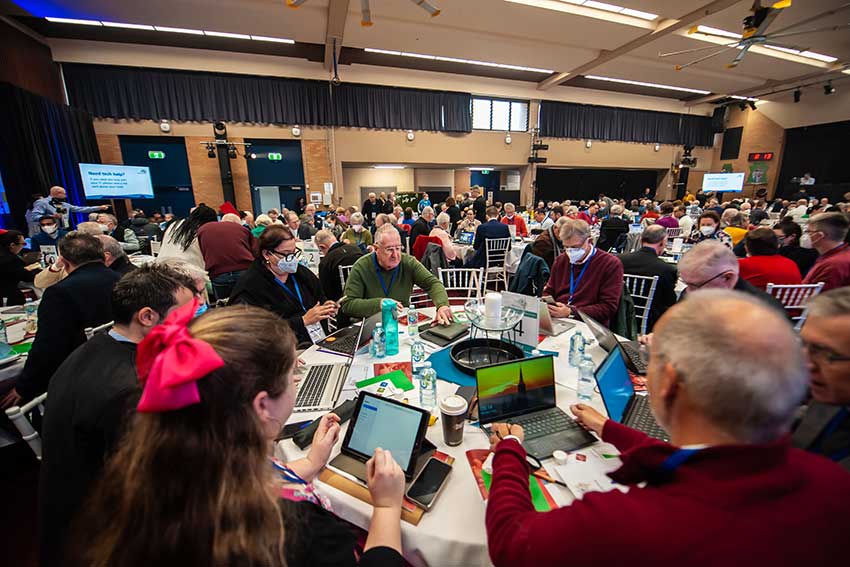
The Plenary Council could be seen as a qualified “win” for conservatives and Church unity, the world’s most popular Catholic website has said, with secular media outlets instead focusing on the division and controversy over the women’s diaconate.
“Inasmuch as the council rejected proposals which would have called for Rome to either dispense from canon law, change sacramental teaching, or upend the basic ecclesiology of the Church’s hierarchy, it could be called a ‘win’ for ‘conservatives’ — but neither of those words seems especially well-suited to what happened in Australia,” wrote Ed Condon, canon lawyer and editor of The Pillar, after the conclusion of the second assembly.
“While a simplistic review of the council’s final votes might suggest that a strongly progressive agenda was beaten back, that framework doesn’t account for the broad unity shown in the final sessions after the ructions of the first vote on female ordination.”
“Everybody predicts dramatic change, but what comes out of it is a lot of high drama but not much change.”
He also appeared on the The Spectator’s religion podcast, Holy Smoke, and told host Damien Thompson that despite “seemingly irreconcilable competing agendas” the second assembly’s final documents were “something that everybody broadly speaking could get behind”.
The Plenary Council, Mr Condon said, was a useful test-case for how synodality might unfold at the 2023 Bishops Synod on Synodality: “everybody predicts dramatic change, but what comes out of it is a lot of high drama but not much change.”
Mr Thompson described the Catholic Church in Australia as “achingly PC [politically correct]” and said synodality was an expensive and dubious exercise.

Australian responses to the Plenary Council have largely focused on participants’ disappointments over the Bishops’ blocking vote on motions regarding women.
The initial text did not receive enough support to pass, but was reworked after a protest on the floor of the second assembly by around 70 delegates, including senior religious, priests, and a handful of bishops.
The Sydney Morning Herald has extensively covered the issue, including in an editorial, saying Australia’s bishops “should embrace [women’s diaconate] enthusiastically”.
“But allowing women to serve as deacons (as they have long been able to in the Anglican Church) would be an important, if incremental, sign of progress.”
“No one expects the Catholic Church to be at the foreground of a feminist revolution: female priests are certainly not on the agenda,” the editorial said.
“But allowing women to serve as deacons (as they have long been able to in the Anglican Church) would be an important, if incremental, sign of progress.
“The church hierarchy insists it values the contribution of female Catholics; allowing women into the diaconate would be a way to demonstrate they really mean it.”

Advocate for women’s diaconate Sr Elizabeth Young rsm, writing in the Herald, said that the failure of the initial text on women prompted her “to question my own humanity and the value of my baptism”.
“Others I spoke to were pained, bruised and disillusioned,” she wrote.
Writing on her own blog, Sr Young said the Plenary was a “step forward”.
“Broken Bay diaconate formation team member Gail Gill also spoke to the Herald, saying the news that the initial vote had failed “felt almost like a physical blow”.”
“We are talking about this topic on a much bigger stage now, and we are contributing to the global discernment on women and the diaconate.”
Broken Bay diaconate formation team member Gail Gill also spoke to the Herald, saying the news that the initial vote had failed “felt almost like a physical blow”.
“I felt such a deep sadness that I was beyond even feeling angry.”

Madeleine Forde, 26, attended the Plenary Council as a delegate for Adelaide but now lives in Sydney, and told The Australian that she left the second assembly in tears.
She thought the failure of the initial text might be a “tipping point” for youth in the Church.
Jennifer Oriel, a columnist at The Australian, said it was “unclear why the Catholic Church continues to defend the fallacy that half of humanity is unfit to lead” but conceded that defenders of the status quo may have been helped by the scenes at the second assembly.
“If they believe women are too emotional to provide stabile [sic] leadership, the emotionally charged scenes at the Sydney plenary would have done little to disprove the theory,” Ms Oriel wrote.
“While thankful for what was achieved, the PC simply side-stepped the major issues facing Australian Catholicism. But all is not lost.”
“If they reject greater representation of women in church leadership because it is framed in activist terms rather than derived from scripture, it is well justified.”
Church reformers Geraldine Doogue, Marilyn Hatton, John Warhurst, Paul Collins and Francis Sullivan have all written reflections on the conclusion of the second assembly, generally approving of progress made on key issues but lamenting the Plenary’s incrementalism.
“So, while thankful for what was achieved, the PC simply side-stepped the major issues facing Australian Catholicism. But all is not lost,” Mr Collins wrote.
“Awareness has been raised, Catholics wanting renewal are clearly the majority, prominent lay leaders have emerged and many of the bishops ‘get’ the real issues.”
